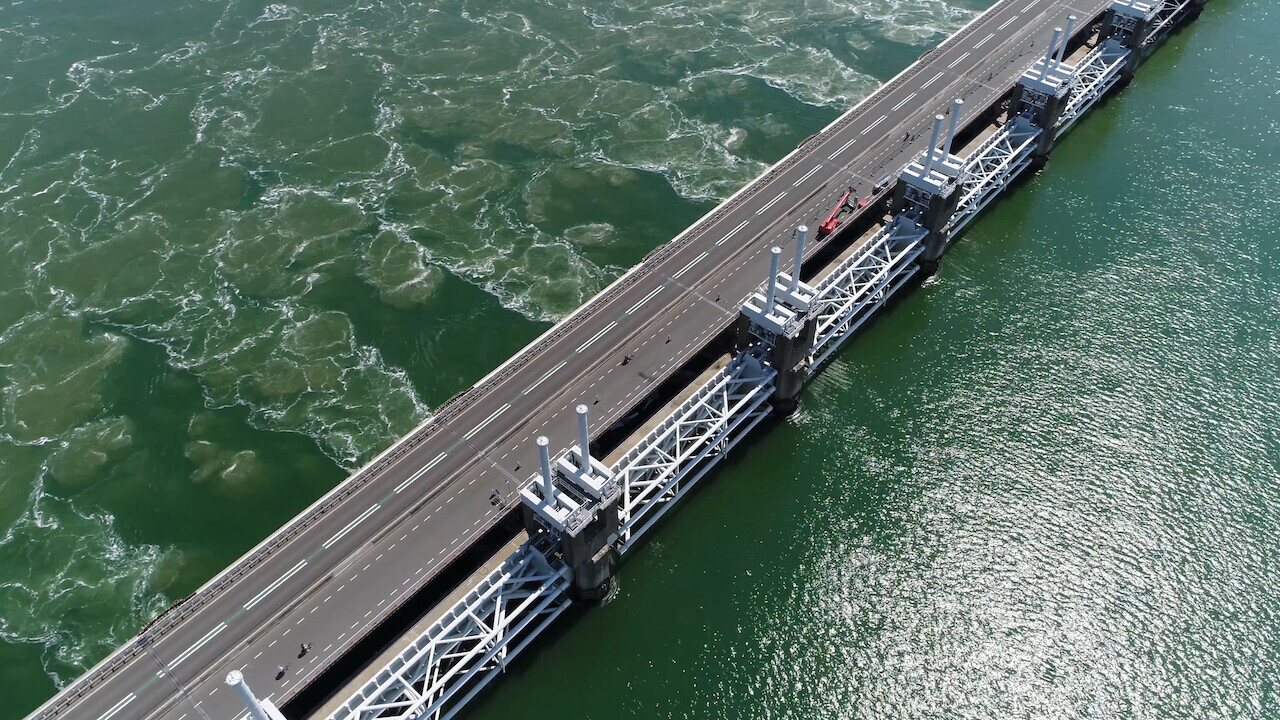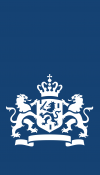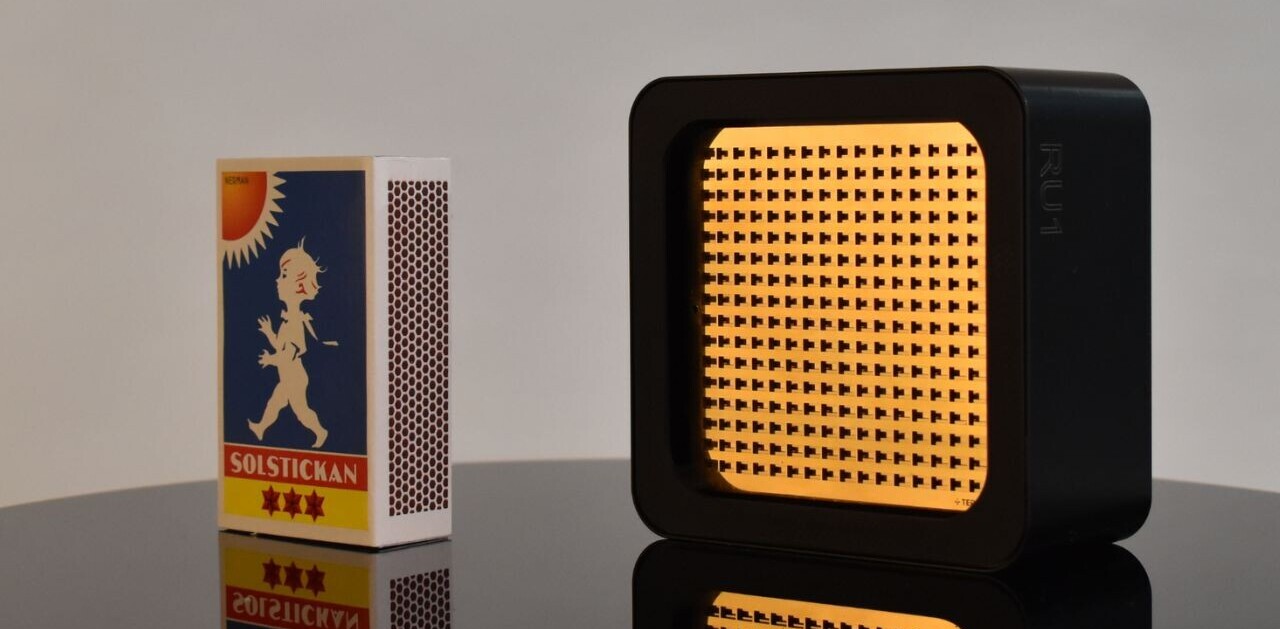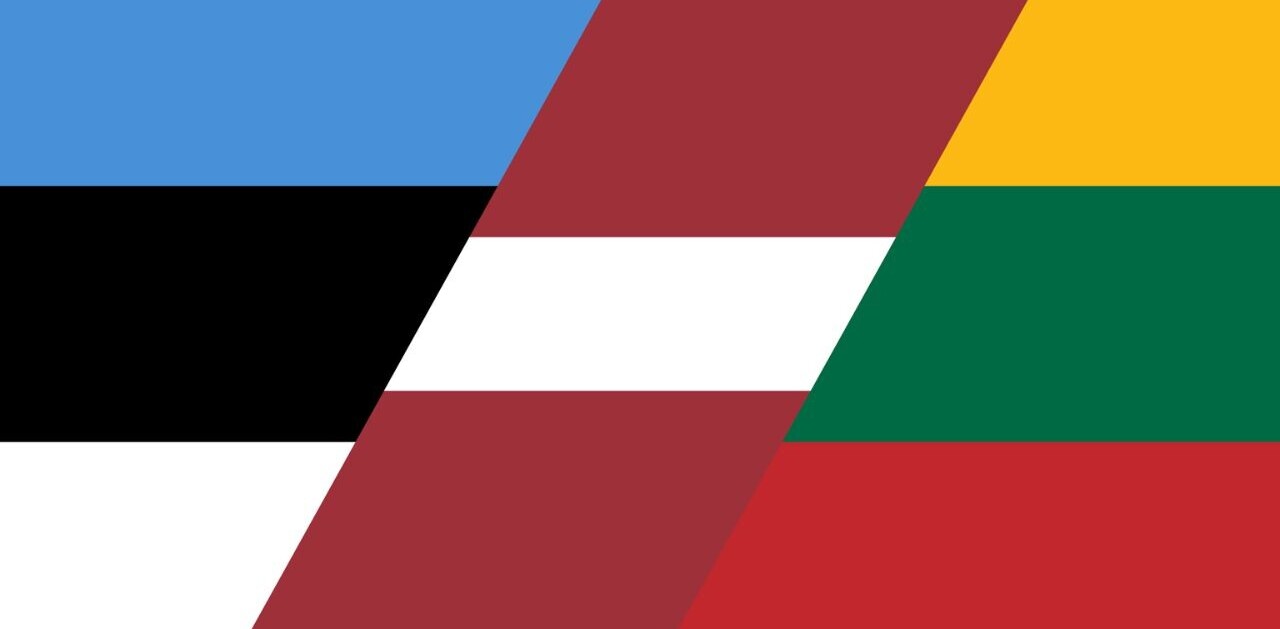
With over 27% of the country below sea level, the Netherlands boasts one of the world’s – if not the world’s — most intricate and advanced water management networks. Over 5,000 kilometers of waterways crisscross the country, connected by a sophisticated network of bridges, dykes, and locks. There are even more waterways than highways in the country, which are used to transport around 35% of the countries’ goods.
Rijkswaterstaat, the department tasked with managing and maintaining this gargantuan system, was founded in the late 1700s, and relies on thousands of employees to keep the Dutch waterways running smoothly. While inspections and maintenance used to take up a large percentage of the department’s person-hours, more and more monitoring is now done remotely, sometimes using innovative new technology — and sometimes with downright ingenious workarounds.
What’s challenging here is that bridges and locks are sometimes tendered by the responsible province or municipality, explains Therry van der Burgt, solution architect at Rijkswaterstaat.
“There’s no one-size-fits-all approach to extract data from public infrastructure, so we had to come up with a standardized way to tell if a bridge is open or not.”
Which they did, by attaching internet-connected sensors to the road barriers on those bridges.
Locks from the 13th century
“These sensors are completely independent from the bridges’ systems, but do tell us when the barriers close, which means the bridge is open,” he tells me in the typical Dutch way of downplaying something inventive as if it’s nothing remarkable. Which it definitely is, considering the system had to work with locks built in the 13th century.
Want to learn more about Rijksoverheid projects in your IT field? Sign up here.
Other solutions are more complex, especially when it comes to trying to predict if maintenance might be needed before an object actually breaks. Van der Burgt explains how Rijkswaterstaat installed current meters in bridges that constantly monitor the use of electricity and send that data back to the team.
“Much public infrastructure uses a ton of power when it’s being used. Think, for example, about a bridge that opens,” van der Burgt continues. “So when we combine data on the behavior of an object and its use of electricity, we get interesting results.” How much power a process requires becomes predictable over time, so Rijkswaterstaat deployed systems that raise an alert when an object is consuming too much, or too little, electricity. When this is triggered, they send someone to check out what’s wrong.
Calculating the best shipping routes
As a solution architect, van der Burgt is tasked with safeguarding that data from the right system ends up in the hands of the right person at the right time. This can be as diverse as intrusion data from off-shore wind farms being passed on to security companies, to designing the tool that allows captains to calculate the fastest shipping route with real-time updates on traffic, wait times for bridges, and water levels.
That last bit is a lot more complicated than you think. Traffic on waterways is governed by a completely different set of rules than air traffic. Planes are managed centrally, neatly routed into corridors and order. Barges on the waterways, which can reach lengths of roughly two Boeing A380s (147 meters), abide by more road-like procedures, with first-come, first-serve rules at locks and bridges.
In such a dynamic system, more data means a greater ability to predict the future. This allows captains of large barges to not have to stop and start as much, which means less fuel consumption, and goods arriving on time. This underlines the importance of central and standardized real-time data collection — and distribution.

Van der Burgt doesn’t just focus on Dutch waterways; he’s also working with an international taskforce to create a Europe-wide waterway information platform that will be operational this year. The platform gathers waterway data like real-time traffic information, bridge, and lock updates, and water depth from all over Europe and makes it available to skippers.
Autonomous boats
“One complicating factor in the process is that many skippers also live on their barges, making it their de-facto home. So sharing these locations is basically sharing someone’s home address,” van der Burgt says. So not only did they have to standardize disparate data from 13 countries on dozens of different data points, but also design a system in which skippers can manage their privacy settings on the platform, allowing them to choose who can see where they are.
The Europe-wide system is also a step in harmonizing data for the next big revolution in shipping: autonomous barges.
“The first steps have already been taken,” van der Burgt says, hardly concealing his excitement. In 2019, a 135-meter barge completed a successful autonomous 25-kilometer journey between two Dutch ports. “Of course the boat itself has a bunch of sensors on board, to stay in position, but all our sensors on shore could help with better situational awareness.” He adds, “and in theory, the sensors on autonomous boats could supplement our data, allowing for an even fuller picture.”
When we forced him to guess, van der Burgt estimated that Rijkswaterstaat processes over 100 terabytes of data per day, although the true extent is unclear — even at Rijkswaterstaat. “I always say: we’re sitting on a treasure chest of data.”
But data itself is obviously not worth anything without the systems and people to make sense of it.
“The scope of our work is huge, aside from everything that happens in shipping and waterways. You’re working with systems inside of ships but also in bridges, which are just enormous machines, and with a group of people with all kinds of different expertises,” van der Burgt says. “And on top of that, you’re creating public value. You tell me: would you rather be at a birthday party telling people how you’ve worked on some system to sell people more junk, or that you’re literally helping keep the country afloat?”
Get the TNW newsletter
Get the most important tech news in your inbox each week.






